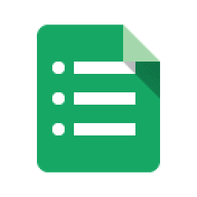 What's in a name? This is an expression we've all heard before, but what's the answer? Are names important? In this fourth video of my "What I've Learned" series, I share two of my experiences, one from a teacher's perspective and one from an administrator's point of view. Through these short stories, you'll see that a person's name isn't just important, it's powerful. If you haven't yet watched the first three videos in the series, you can do so by visiting the "What I've Learned" page. If you've already seen them, I welcome your feedback.
3 Comments
 By now, most in education have heard of “flipping” the classroom, the concept of the teacher creating instructional videos that students watch at home, freeing up time in class for deeper learning opportunities or reteaching. For example, if students in a science class watch a teacher-created video at home that introduces a scientific concept, the teacher can then use class time the next day to engage students in a hands-on lab that makes the concept come to life. I think this in an amazing idea that is transforming classrooms all over the world, but what about those teachers who aren’t quite ready to jump into the flipping pool? What about those who don’t have the time, equipment, or expertise to create all the videos required to flip their classrooms? What about those who like the idea of flipping but need to take baby steps? One of the key aspects of flipping is that it opens up time during class that, if used effectively, can increase student learning. What if teachers could gather feedback from their students on a homework assignment, before class the next day, finding out which parts of the assignment gave the students difficulty? This would enable teachers to design lessons that focus on what the students really need, rather than what teachers think the students need. Is this possible? Can teachers really get this type of information that would enable them to tailor their lessons to students’ needs? Through the magic of Google Forms, the answer is "yes." By creating and posting on their classroom website a simple Google Form like the one shown below, teachers can quickly and easily find out how their students fared on a particular assignment and plan the next day’s lesson accordingly. The procedure might look something like this. The teacher creates and posts on his/her website a Google Form asking students to give feedback on the night’s homework assignment. Students fill out the form (which would take less than a minute) and responses are collected in a spreadsheet for the teacher to view. If, for example, the majority of students indicated they had difficulty with #’s 5 and 13, the teacher then knows to devote time the next day to going over those particular problems, and not necessarily on ones students didn’t have trouble with. Or, perhaps the class grasped the entire lesson quite well, when the teacher anticipated spending a lot of time the next day reviewing the lesson. No more guessing or spending time on problems the students already “get.” Plus, by using Google Forms in this way, students are able to communicate with their teacher anonymously, eliminating potential embarrassment by having to raise their hand in class to say, “I didn’t understand how to do this problem.”
So, if you’re looking for an easy way to more effectively use your class time to maximize student learning, but you aren’t quite ready for flipping, give Google Forms a try. Thanks to Shannon Augustin, who has successfully been using Forms with her students, for sharing this amazing idea with me. If you’re not familiar with how to create a Google Form, be sure to check out my Google Forms Tutorial Videos. Enjoy! |
About BrentBrent has worked in the field of education as a teacher and administrator for 28 years. A former elementary school teacher and principal, he is currently Coordinator of Elementary Education in the Murrieta Valley Unified School District in Southern California. Read more about Brent here. Brent on X (Twitter)Archives
May 2024
Categories
All
|
Photos from somegeekintn, woodleywonderworks, Joybot, British Council Singapore, jseliger2, berkuspic, toddwendy, Alexandra E Rust, skippyjon, crdotx, tharrin, roybuloy, .FuturePresent., Just some dust, frankpierson, Jair Alcon Photography, Luigi Mengato, Muffet, stevendepolo, Pilar Soro, Sander van der Wel, jblyberg, jonathangarcia, DraXus, angeloangelo, Sthetic



 RSS Feed
RSS Feed
